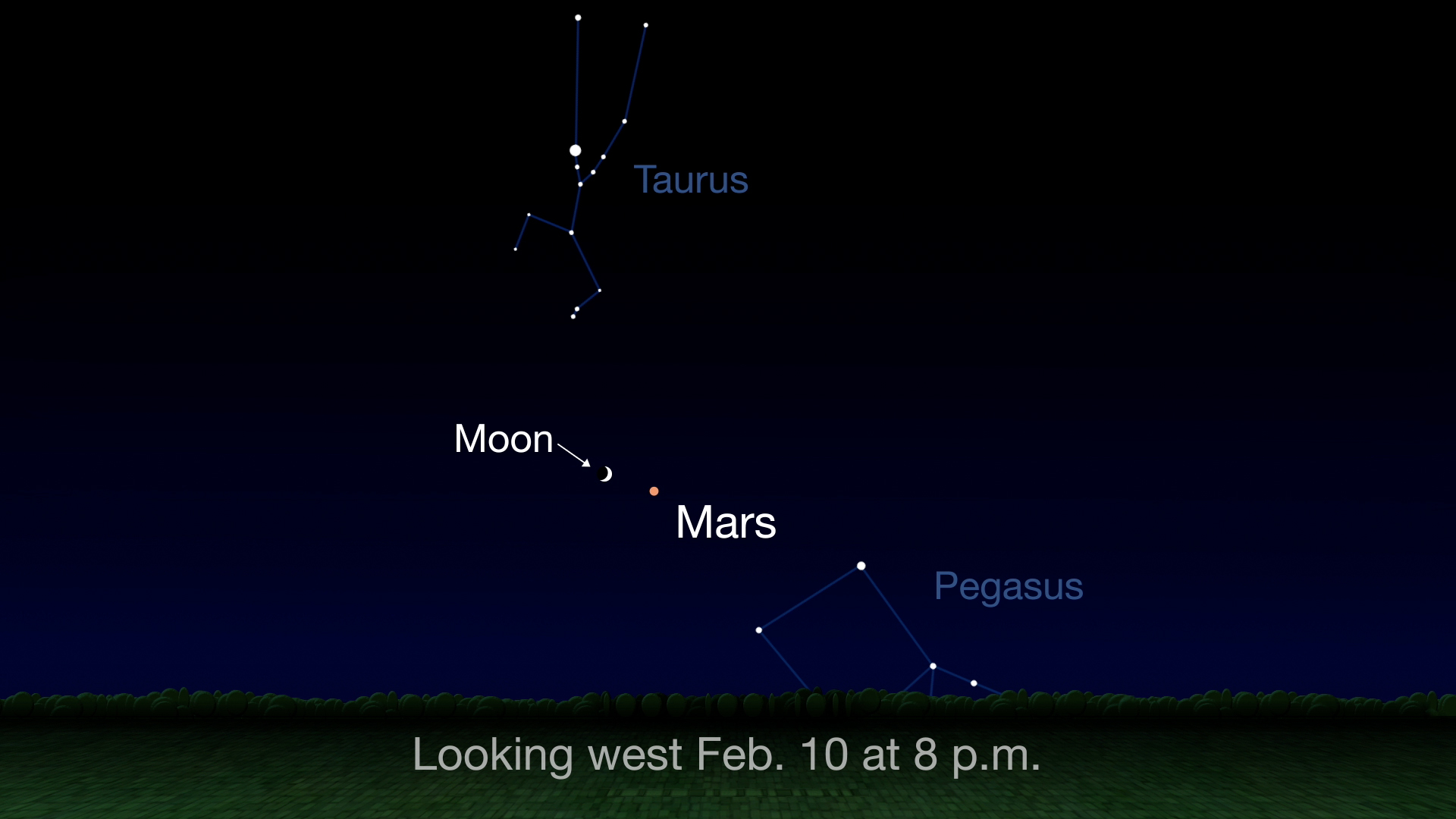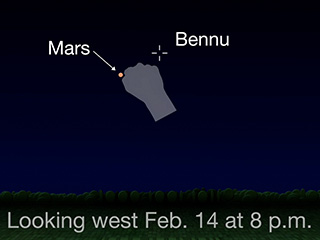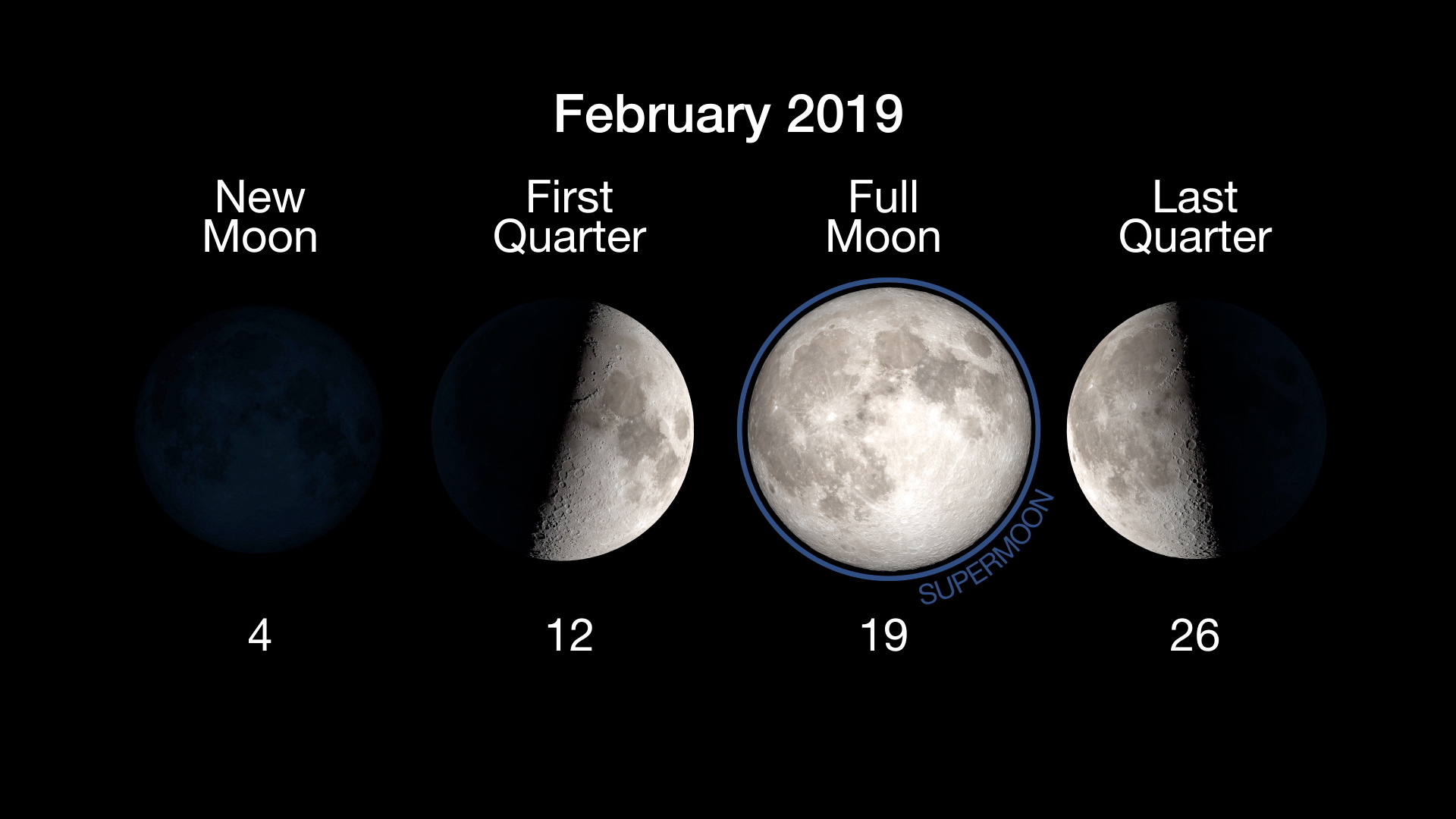What’s Up: February 2019 Skywatching from NASA
| Credit | NASA/JPL-Caltech/Presenter Voice: Jennifer Corbilla |
|---|---|
| Historical Date | February 4, 2019 |
| Language |
|
What can you see in the February sky? Stars and planets with distinct red and blue colors, like Mars and Sirius. February also brings some pretty pairings with Venus, Saturn and the Moon, and the best opportunity of the year to catch a glimpse of Mercury. We also point out locations in the sky of several destinations recently visited by NASA spacecraft.
Transcript
What's Up for February? Colors in the sky, some pretty pairings, and destinations visited by NASA spacecraft.

Each star and planet has a characteristic color, and February is a good month to look for sky objects that are distinctly reddish or bluish.
Look west in the first couple of hours after sunset all month long to spot reddish Mars.
Turning to the south and looking high in the sky, the red star Aldebaran in Taurus is sometimes called the "eye of the bull," and red Betelgeuse is Orion's shoulder. Contrast these colors with blue-white Rigel, Orion's knee, and Canis Major's blue-white Sirius, the brightest star in the sky.
On the 10th the crescent Moon pairs up with Mars. Look for them in the west about an hour after sunset. NASA's InSight mission landed on Mars on November 26 to study the planet's interior and provide new insights about how the Red Planet formed.
NASA’s OSIRIS-Rex spacecraft is exploring asteroid Bennu; which is too faint to see without a telescope. But on Valentine's Day, Bennu will be located just to the right of Mars--about the width of your fist held at arm's length. So on the 14th give a little wave to Bennu--and OSIRIS-Rex while you're at it (sky chart).

By the morning of the 27th, Venus and Saturn have moved apart, forming a lovely lineup with Jupiter, which itself receives a visit from the crescent Moon. Look low in the southeast an hour before sunrise (sky chart).
Mercury also makes its best showing of the year on the 27th, for observers in the Northern Hemisphere.
If you have a clear view of the horizon, look west just after sunset. Mercury will be only 10 degrees above the horizon—the width of your fist held sideways.
This little planet is closer to the Sun than Earth, and moves quickly in its orbit, meaning it's lost in the Sun's glare much of the year. So catch it while you can.
And here are the phases of the Moon for February.

You can catch up on all of NASA's current and future missions at nasa.gov
That's all for this month.
About Asteroid Bennu
An ancient relic of our solar system’s early days, Bennu has seen more than 4.5 billion years of history. Scientists think that within 10 million years of our solar system’s formation, Bennu’s present-day composition was already established. Bennu likely broke off from a much larger carbon-rich asteroid about 700 million to 2 billion years ago. It likely formed in the Main Asteroid Belt between Mars and Jupiter, and has drifted much closer to Earth since then. Because its materials are so old, Bennu may contain organic molecules similar to those that could have been involved with the start of life on Earth.
Read More
- Information about all of NASA’s missions: https://www.nasa.gov
- InSight mission to Mars website: https://mars.nasa.gov/insight
- OSIRIS-REx mission website: https://www.asteroidmission.org
- Additional astronomy & skywatching info from NASA’s Night Sky Network: https://nightsky.jpl.nasa.gov
- More video content from NASA: https://www.youtube.com/user/NASAtelevision
- More video content from NASA-JPL: https://www.youtube.com/user/JPLnews
